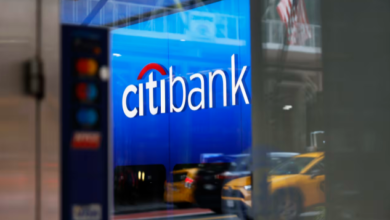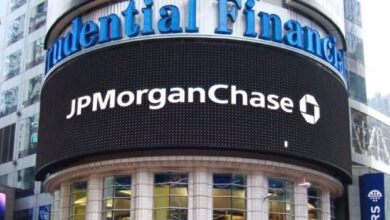6 Things That Are Getting More Expensive Amid Fed Rate Hikes


The Federal Reserve raised its benchmark federal funds rate today, increasing it by 0.75 of a percentage point, putting it into a range of 3% to 3.25%.
The Fed took the action as part of its widely publicized campaign to bring inflation under control. It’s the fifth hike since March and the third consecutive hike of 0.75 of a percentage point. Prior to this year, the Fed had not raised the federal funds rate by that much at once since 1994.
An increase in the federal funds rate — which is the rate that banks charge other banks for short-term loans — always creates winners and losers. Some people benefit financially from rate hikes, others suffer. And many of us experience a little of both.
The positives of rate hikes — primarily higher returns on savings accounts and CDs — are great. But in many ways, they pale next to the potential damage that rate hikes can inflict on our finances.
Following are some aspects of your finances that are becoming more expensive, or likely will, now that the Federal Reserve has raised the federal funds rate five times this year.
Carrying a credit card balance

Failing to pay off your credit card bill in full each month is never a good strategy. But when the federal funds rate rises, things become much worse for those who carry a balance on such accounts.
Your credit card rate does not remain static over time. It is a variable rate that can go up and down. And when the Fed raises rates, lenders typically increase these variable rates in response.
That is because the federal funds rate has a strong influence on the prime rate, which is the rate commercial banks charge to their most creditworthy customers. Banks use the prime rate as a starting point for setting many other rates, including credit card rates.
In fact, the average annual percentage rate (APR) for credit cards was 15.13% in the second quarter of this year — up from 14.56% in the first quarter and higher than it has been in years.
The best way to avoid increasing credit card borrowing costs is to pay off debt as quickly as you can. If you need help, check out Money Talks News’ Solutions Center, where you can find a reputable credit counselor.
Buying a home

There is a widespread myth that when the federal funds rate climbs, rates on fixed mortgages follow right behind it.
That isn’t exactly so. There is no direct connection between the federal funds rate and fixed mortgage rates. However, the two do tend to move in the same general direction.
And in fact, mortgage rates have climbed higher since the Fed began its current rate-hiking campaign in March. The average rate for a 30-year fixed-rate mortgage is now 6.02% — the first time it has exceeded 6% since 2008, according to Freddie Mac.
If you already have a fixed-rate mortgage, nothing will change with your payment. That rate is set in stone, and Federal Reserve rate hikes do not affect the terms of an already-established fixed-rate loan.
If you have an adjustable-rate mortgage (ARM), though, things are different. A rising federal funds rate is more likely to cause your borrowing costs to rise. ARMs adjust periodically according to the terms of the loan. Depending on the benchmark your loan is tied to, your rate may move north in tandem with the federal funds rate.
Refinancing a mortgage

Mortgage rates have moved sharply higher recently, and the rising federal funds rate won’t help reverse that trend. Mortgage rates are now so high that a refinance no longer makes sense for millions of homeowners.
Still, that doesn’t mean you should reject a mortgage refinance out of hand, even after today’s Fed decision.
As we noted in the previous section, rates on adjustable-rate mortgages can be particularly sensitive to hikes in the federal funds rate. So, if you have an ARM, it might be worth considering refinancing into a fixed-rate loan, especially with the Fed promising to continue hiking the federal funds rate.
If this sounds like the right move for you, go to Money Talks News’ Solutions Center and search for a great rate on a mortgage refinance.
Purchasing a car

If you have the cash to buy a car outright, you’re golden: An ascending federal funds rate will mean little to nothing for your finances as you look for a new vehicle.
But most of us are not that fortunate. Instead, we require an auto loan to finance our purchase.
Thanks to the Federal Reserve’s latest moves, rates on auto loans are pushing higher. In the second quarter of 2022, the average APR on new financed vehicles reached 5% for the first time since early 2020, according to Edmunds.
If you need this type of loan, make sure you shop around for the best rate. If you can afford it, you might also consider making a larger down payment as a way to defray some of those higher interest costs.
Renovating your home

Americans love home sweet home, and they tend to pamper their abodes by renovating them at every opportunity. If you have used a home equity line of credit — or HELOC — to finance a past renovation and are still paying off what you borrowed, prepare for your costs to rise if they haven’t already.
HELOC rates typically are variable, meaning there is a good chance your lender will respond to a rising federal funds rate by increasing the rate on your outstanding loan.
Starting a business

This is an under-the-radar impact of a hike in the federal funds rate. Many small businesses borrow money to get started, and these loans may be tied to variable rates.
For example, the Small Business Administration’s 7(a) Loan Program — the SBA’s most widespread loan program — offers variable-rate loans. As we mentioned earlier, these are the types of loans most sensitive to changes in the federal funds rate.
So, if you are a small-business owner looking to borrow, your costs may be higher now, thanks to the Fed’s latest moves.
Disclosure: The information you read here is always objective. However, we sometimes receive compensation when you click links within our stories.
Source link





